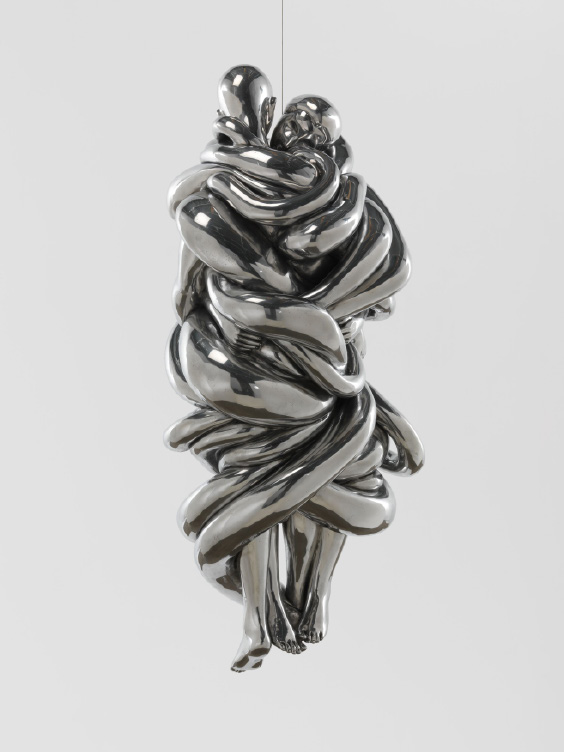Louise Bourgeois Exhibition at Tarmak22
25.01.2021 Arts & CultureThis winter season Hauser & Wirth, an international gallery devoted to contemporary and modern art, is bringing the work of one of the most celebrated artists of the 20th century to the Saanenland: Louise Bourgeois. Available to experience at Tarmak22 in Gstaad as well as online, this exhibition of Bourgeois’ work is titled The Heart Has Its Reasons.
Louise Bourgeois was a French-American artist. Best known for her large-scale sculpture and installation art, Bourgeois was also a prolific painter and printmaker across a career that spanned seven decades. Born in Paris in 1911, Bourgeois was a talented student who began drawing at the age of eleven. Her parents ran a tapestry restoration business and she would help out in the workshop by drawing any missing elements in scenes on the tapestries.
Bourgeois went on to study mathematics and philosophy at the Sorbonne, where she wrote her thesis on Blaise Pascal, a 17th century philosopher, before turning to art. It is noteworthy that the exhibition at Tarmak22 takes its title from one of Pascal’s most famous quotations: “The heart has its reasons of which reason knows nothing.”
In 1938 Bourgeois moved to New York with her husband, where she continued to work until her death in 2010 at the grand age of 98. She completed her final pieces just a week beforehand.
The human experience
The exhibition at Tarmak22 spans Bourgeois’ work from 1949 – 2009. On display are watercolours, bronzes and etchings as well as sculptures in aluminium, lead and stainless steel.
The collection probes the complexities of the human experience, reflecting Bourgeois’ belief that there is something in our emotional and psychological experience that eludes rational explanation.
Throughout her career, Bourgeois explored the themes of loneliness, jealousy, anger and fear across the realms of domesticity, family, sexuality, the body, as well as death and the unconscious. A factor that unifies the pieces is the interplay between binary opposites – mind and body, geometric and organic, male and female, conscious and unconscious – that animate Bourgeois’ work as a whole. Above all, this exhibition speaks about Bourgeois’ need for love, the ‘polar star’ she could not live without.Hauser & Wirth is especially delighted to bring a selection of landmark sculptures to Gstaad such as ‘Eyes’ (2001), ‘Couple’ (2007 – 2009) and ‘Untitled No. 7’ (1993). It is not difficult to see why. There is something dazzling about the variety and scale of the pieces on display, an impression further enhanced by the exhibition space. Offering extensive views over Gstaad and the Alps, the location serves as a wintry canvas on which to experience these incredible pieces.
Bourgeois’ influence
Bourgeois was a highly-respected artist, earning a dazzling reputation over the many years she was active. But how, we asked James Koch, partner and executive director at Hauser & Wirth, would he summarise Louise Bourgeois’ work and influence to someone who knows little of the art world?
“Louise Bourgeois is a towering figure in the history of modern sculpture. She is most widely known for her incredible outdoor sculptures, such as her large-scale spider works titled Maman, and has exhibited in institutions across the world including a retrospective at the MoMA in 1987, her representation of the United States at the 45th Venice Biennale in 1993 and her Turbine Hall commission at the Tate Modern in 2007. Her remarkable works, often exploring female sexuality, childhood trauma and her own introspective reality, pack a real emotional punch. Yet this intensely personal language also translates universally, which is why I think people will always be drawn to her art.“She employed a variety of genres, media and materials over her seven-decade career, and played upon the powers of association, memory, fantasy, and fear. Her distinctive style never belonged to one artistic movement, despite working within the microcosm of 20th-century art. Her individuality is unparalleled.”
Expectations and impressions
There are many reasons to make time to visit the exhibition. Spanning a 60-year period, it demonstrates to visitors how Bourgeois’ work evolved over time. But what impressions does Koch hope visitors will take with them when they leave?
“I hope that the theme of the exhibition, inspired by the Blaise Pascal statement ‘the heart has its reasons of which reason knows nothing’ will resonate with visitors. Bourgeois’ ability to tune into and express a world of emotion, which she often felt, could not be put into words or understood through rational reason, speaks to this incredible yet difficult year, where the complexities of human experience have been brought to the foreground.”
ANNA CHARLES
The Louise Bourgeois exhibition runs from 19 December – 3 March at Tarmak22, Gstaad Saanen Airport. In accordance with recent government guidance, Tarmak22 also had to close its doors. They are planning to open by appointment. Contact: gstaad@hauserwirth.com or +41 79 362 0927.
Hauser & Wirth has also organised an online version of the exhibition on its website, giving art fans a means to enjoy this collection wherever they may be: www.hauserwirth.com






